Social Anxiety at School: A Complete Guide for Affected Students
Going to school and getting a basic education is a human right that not all children get to experience.
For good reason, it is hoped that those who have the privilege of attending primary and high school will be grateful and take advantage of this possibility.
That is why skipping classes is considered a trait of the lazy and ungrateful, who do not understand how lucky they are with the hand that life has dealt them.
However, not all children who miss school do so for these reasons.
A significant proportion of children who are absent from school are plagued by fear and concern about being judged, rejected or negatively evaluated by their peers and teachers.
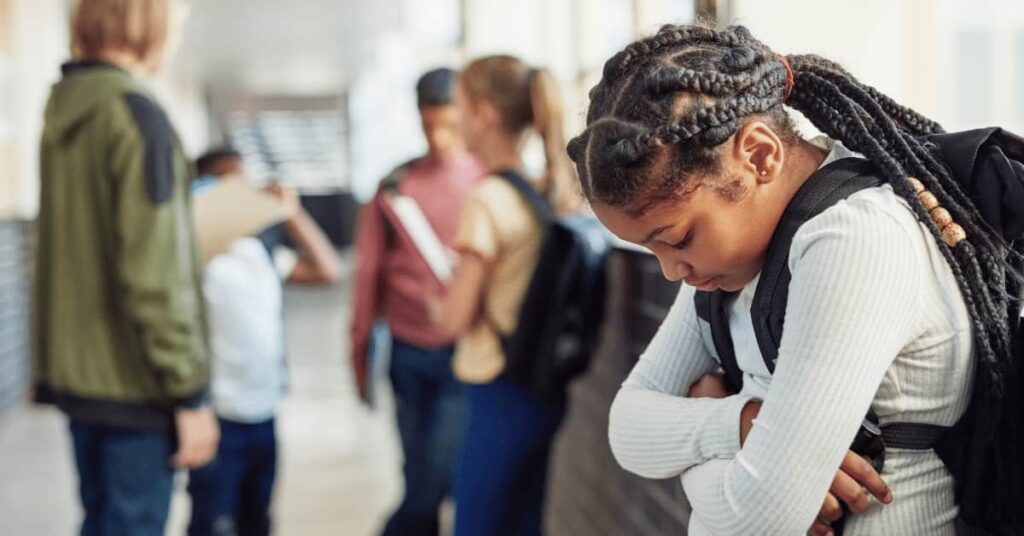
In many cases, these concerns are so intense that school attendance becomes a nightmare, lived with great distress and avoided from time to time, or even abandoned altogether.
When fears experienced in social settings, such as at school, reach levels that cause significant distress, mental health professionals begin to consider a diagnosis of social anxiety disorder (SAD), also called social phobia.
SAD refers to an excessive fear of being judged, rejected, or negatively evaluated in social settings (American Psychiatric Association, 2013).
This article is aimed at adolescents affected by this phenomenon (as well as their parents) to help them understand the extent of the condition and find answers to their questions.
Please note that this article is not a substitute for professional medical advice and that diagnosis and treatment should always be administered by a qualified mental health professional.
That said, let’s dive in and see what can be done about it.
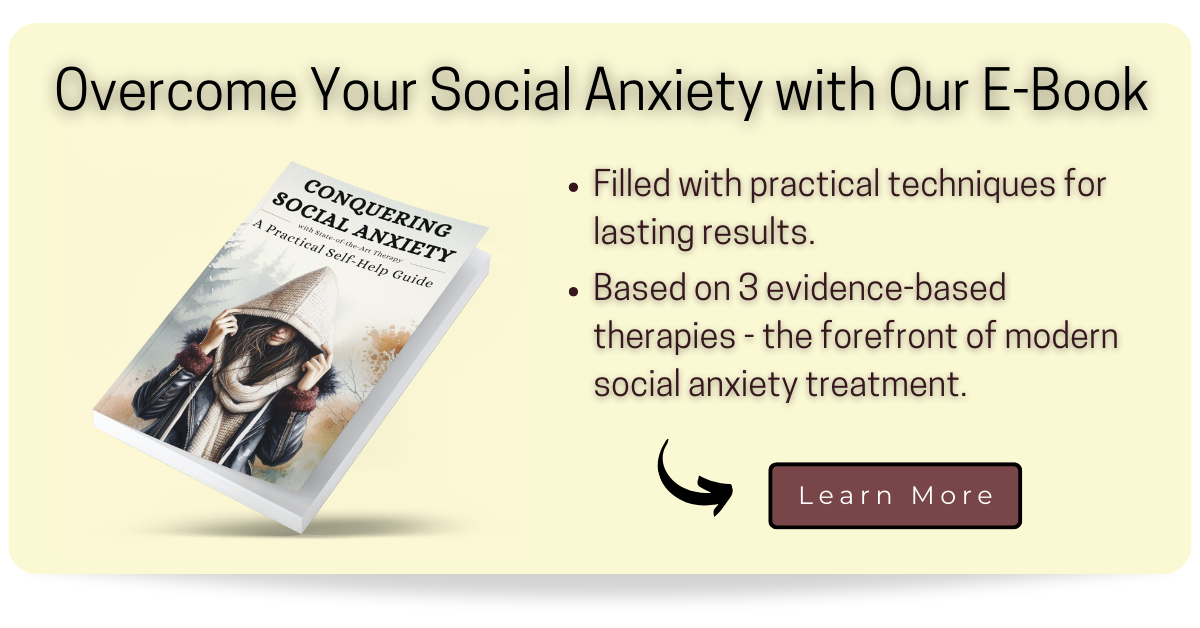
Signs of Social Anxiety at School
If you experience feelings of insecurity and anxiety in the classroom environment, an important first step is to determine the nature of these fears.
That is, it is crucial to understand what exactly you are afraid of. Not all fears experienced by adolescents at school fall under the umbrella of social anxiety.
Once you are clear about the nature of your concerns, you can make better informed decisions about what to do about them.
As noted above, the cardinal feature of social phobia is the excessive fear of being judged, rejected or negatively evaluated by others, such as your classmates.

The following list shows common signs that you may be suffering from social anxiety at school. Notice that they can all be traced back to an underlying fear of negative evaluation.
- Fear of being the center of attention.
- Fear of giving presentations.
- Fear of speaking up in class.
- Fear of blushing.
- Fear of trembling hands.
- Fear of a shaky voice.
- Fear of saying something wrong or “stupid”.
- Fear of excessive sweating.
- Fear of engaging in conversation during recess.
- Fear of socializing with peers.
- Fear of being seen as boring.
- Fear of appearing unsociable or awkward.
- Fear of being laughed at.
- Fear of looking foolish.
- Fear of being teased or ridiculed.
- Fear of becoming uncontrollably nervous.
This list is not exhaustive, as these are only some of the most common examples.
Again, note that all of them carry the possibility of embarrassment and can lead to negative evaluation, judgment or even rejection by others.
Also, some children may be victims of severe bullying. In these cases, a possible diagnosis of SAD becomes somewhat of an afterthought, and children and parents must work closely with teachers and school administration to intervene effectively.
If you are affected by bullying (or you are the parent of an affected child), we recommend you head over to stopbullying.gov or cybersmile.org.
If you experience one or more of the above fears, it is likely that you are affected in some way by social anxiety.

However, as stated above, this can only be determined by a qualified mental health professional.
To learn more about the official diagnostic criteria for social anxiety disorder, click here to access our page on the diagnosis of SAD.
Now that you have determined whether or not your fears at school are signs of social anxiety, let’s look next at why you may be experiencing them.
Causes of Social Anxiety at School
Students with a shy and socially avoidant temperament, as well as those who are generally outgoing but have difficulty in performance situations, such as delivering presentations, can rarely pinpoint an exact cause for these difficulties.
This makes a lot of sense, however.
Psychological traits, such as our tendency to react anxiously to certain triggers, are often the result of a complex interaction between many different factors, such as our genes, the culture in which we grow up, our socioeconomic status, unique life experiences, and so on.

For this reason, it is likely that you can hardly identify a single cause of your anxiety in the classroom.
Instead, it is more likely that a unique combination of predisposing factors contributed to the development of this trait.
The following list summarizes the current state of the science regarding these predisposing factors.
- Predisposing genes (Spence & Rapee, 2016)
- Insecure attachment style (Bohlin, Hagekull, & Rydell, 2000; Muris, Mayer, & Meesters, 2000)
- Unfavorable upbringing (e.g. Bögels, Van Oosten, Muris, & Smulders, 2001)
- Social traumas (Öst, 1985)
- Witnessing the social traumas of others (Öst & Hughdahl, 1981; Mineka & Cook, 1991)
- Difficult childhood experiences (Kessler, Davis, & Kendler, 1997; Magee, 1999; Lieb et al., 2000; Bandelow et al., 2004)
- Insufficient social skills (Spence, Donovan, & Brechman-Toussaint, 1999)
- Unfavorable ways of directing attention (Alfano & Beidel, 2011)
- Predisposing biological traits (e.g.,Condren, O’Neill, Ryan, Barrett, & Thakore, 2002).
- Cultural attitudes (e.g., Hofmann, Asnaani, & Hinton, 2011).
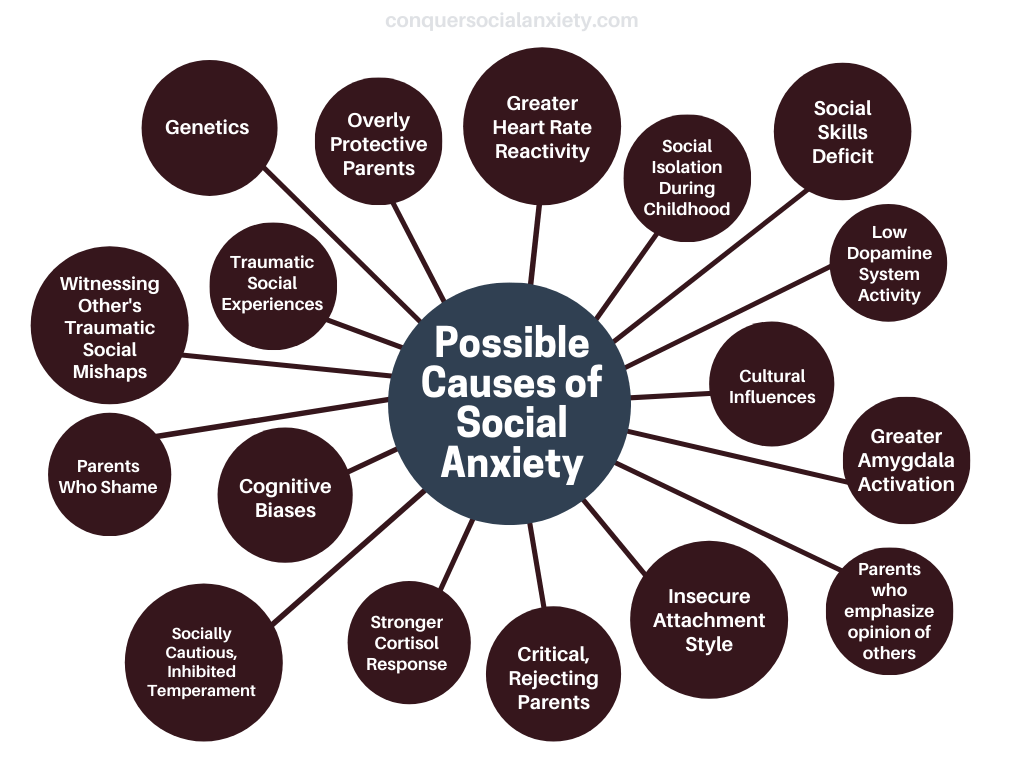
For a more detailed explanation of these factors, click here to view our article on the causes of social anxiety disorder.
As you can see, social anxiety is usually the result of a wild mix of some of these factors, and it’s certainly not your fault that you experience it.
Even if you are among the adolescents who had a specific traumatic social experience (i.e., a concrete experience that seems to have triggered the onset of your social anxiety), it is likely that you were predisposed by some of the other factors mentioned above.
Now that you have a basic understanding of your anxiety at school and why you may experience it, let’s finally see what you can do about it.

How to Deal With Social Anxiety at School?
First things first: if you struggle with social anxiety, it is usually best to consult with a qualified mental health professional.
There are several interventions that are quite effective in reducing social fears. However, only 20% of people who meet the diagnostic criteria for SAD ever receive professional help (Grant et al., 2005).
Asking for help is an important step and can make a big difference in reducing insecurity in social situations.
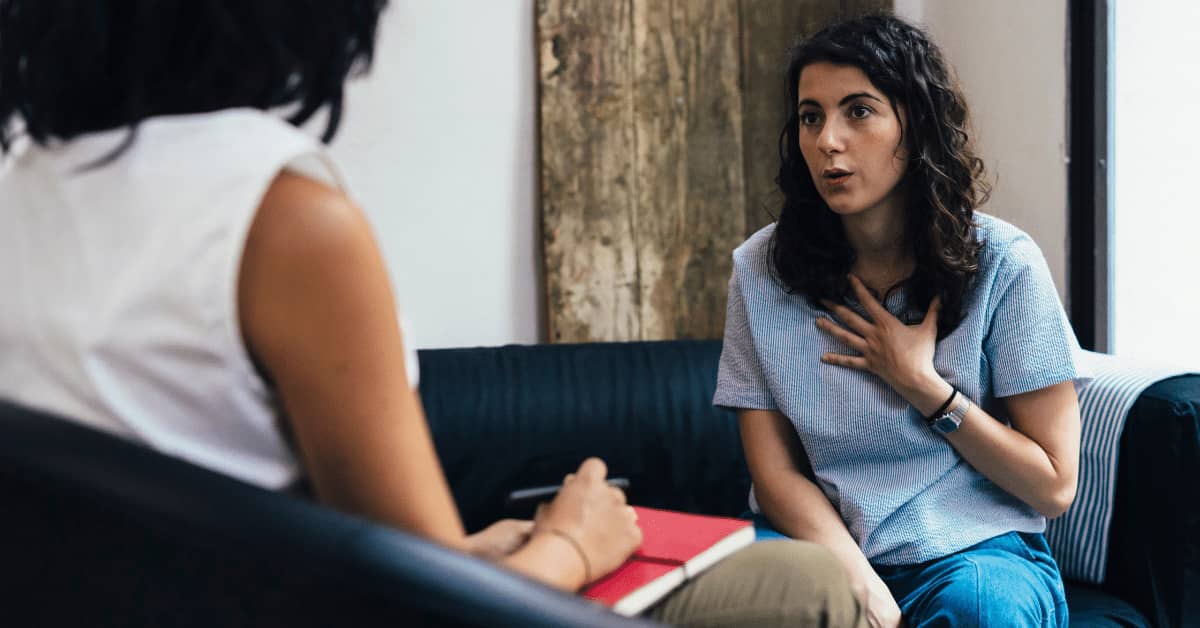
To learn more about the different effective approaches and how to initiate therapy, click here to access our complete treatment guide for social phobia.
That said, here are some general strategies you can keep in mind to cope with your insecurity in the classroom.
(1) Talk to Your Parents
This point may come naturally to some, but it will make others cringe with despair.
Admittedly, not everyone has the kind of relationship with their parents that encourages them to share their emotional problems with them.
However, doing so can move mountains, given that your parents assume their responsibility as your caregivers.
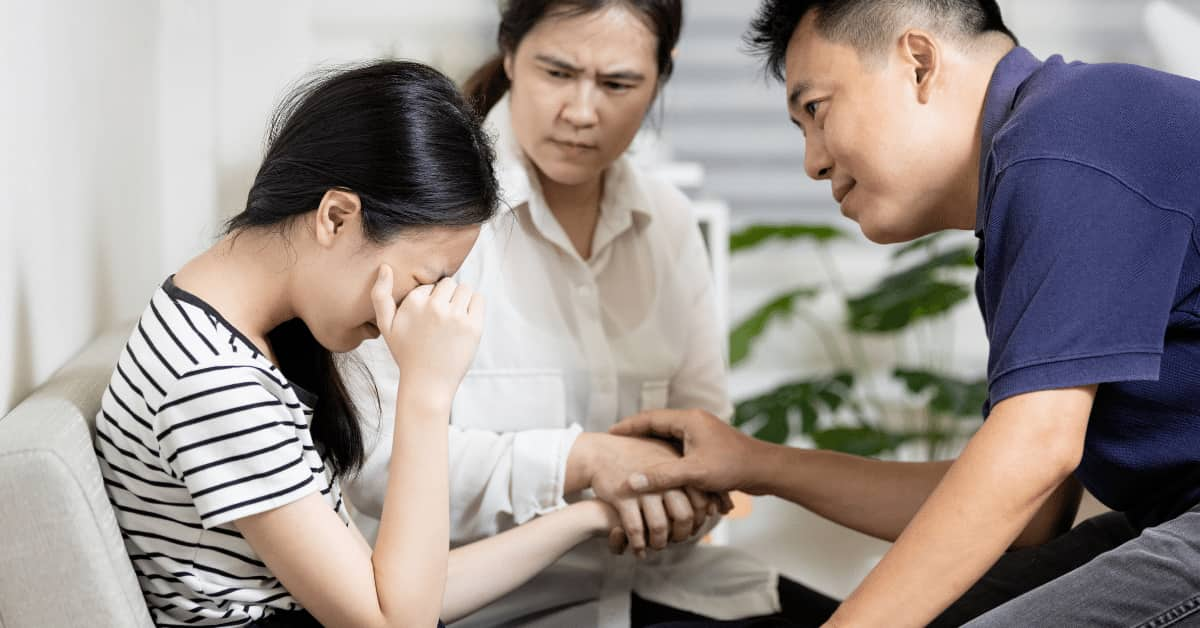
Opening up to your mother and/or father about your struggle with social anxiety at school can be an important step in getting the emotional support you so desperately need.
Likewise, if your parents have your back, it can be much easier to be proactive and initiate practical solutions, such as seeking therapeutic help or communicating your problem to your teachers.
(2) Talk to Your Teachers
Another uncomfortable step? Yes, but also an important one.
If your teachers know about your struggles in class, they are less likely to put you on the spot and punish you with poor grades for lack of participation.
While not all teachers are receptive or approachable regarding mental health issues, many are.
After all, they chose this profession because of their passion to have an important impact on the lives of young people and their future.
Those who take their responsibility seriously will listen to you and look for ways to help you cope and get better.
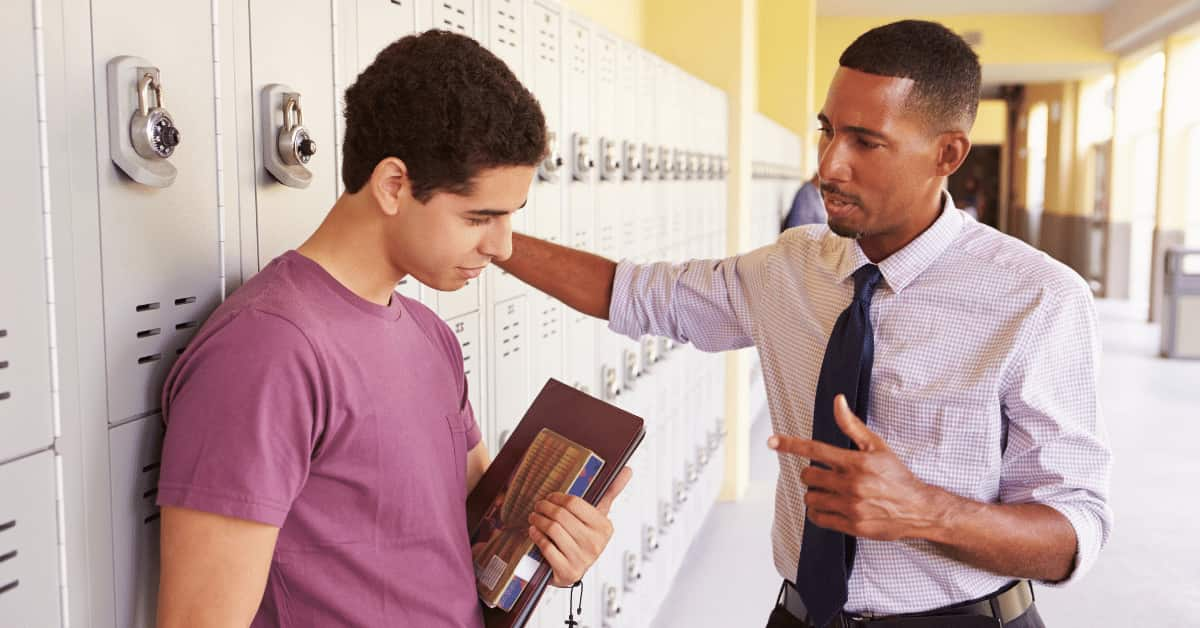
Of course, it may seem risky to share your vulnerabilities with others, as there is no way of knowing for sure that they will not exploit them.
For this reason, you may choose wisely which teachers to approach. It can be a good idea to start with your favorite teacher and team up with him/her for subsequent conversations.
Including your parents in this conversation can be another useful element, as their presence will ensure that your teachers take your problem seriously.
If you decide to approach one or several of your teachers to address your anxiety in the classroom, feel free to share with them our article addressed to teachers on how to support students with social anxiety.
You can access this article by clicking here. This way you make sure that they actually have the basic knowledge to understand your problem.
(3) Make Agreements With Your Teachers
When addressing your feelings of insecurity with your teachers, it is important to let them know that you are not looking for a free pass so that you never have to participate.
In fact, avoiding participation would be a detrimental strategy for your social fears (more on this in a moment).
Instead, be sure to let them know that you are highly motivated to actively participate in class and to reduce your fears one step at a time.
To make this a reality, reaching certain agreements with your teachers can be a game changer.
Depending on your specific fears and struggles, you can ask your teachers not to put you on the spot or have you read long passages of text aloud, and so forth.
In return, you promise to raise your hand and answer simple questions or volunteer to read short paragraphs aloud to the class.
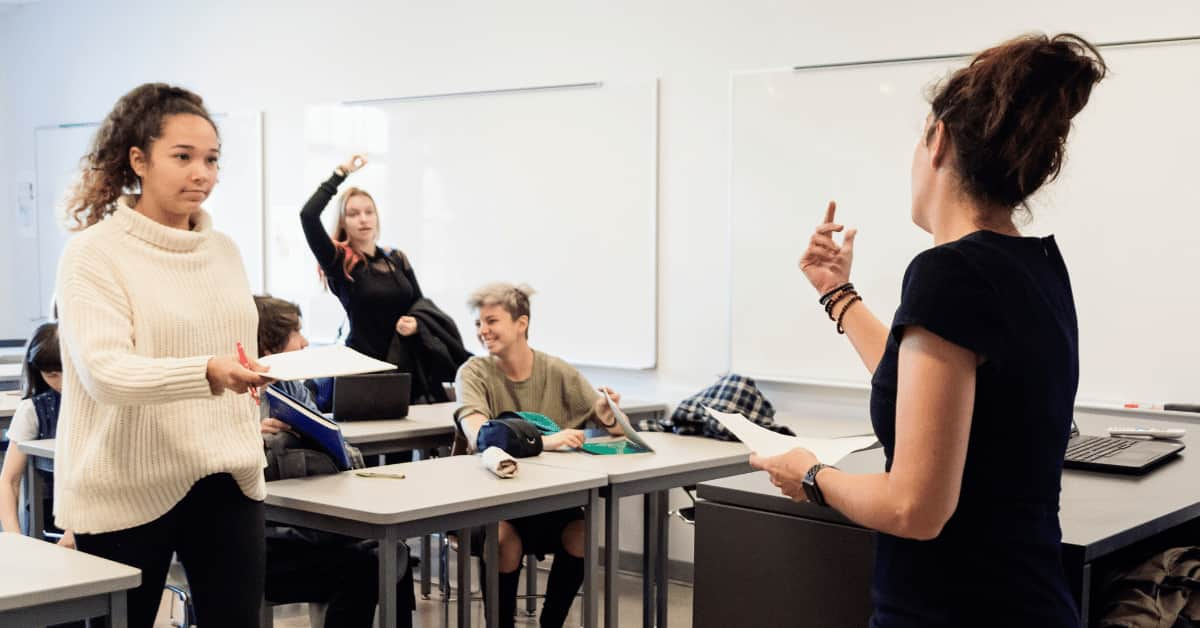
In this way, it is very possible to reduce the uncertainty of the classroom environment, which in turn will make the class much less stressful and give you the opportunity to actively expose yourself and reduce your fears.
In addition, this will give the teacher the opportunity to notice your interest and proactivity in their class, which will lead to more appropriate grades, as they can base their academic evaluation on objectively noticeable participation from your side.
Another useful strategy can be a safety signal between you and your teacher.
If the teacher agrees, you can use the signal whenever you feel overwhelmed, so that he or she knows to take the pressure off you and direct attention elsewhere.

(4) Volunteer Whenever Possible
Many experts agree that continued avoidance of feared stimuli maintains phobic responses, such as in the case of social anxiety.
For example, if you are afraid to raise your hand and speak during class, your natural response is to refrain from doing so.
However, while this strategy may provide short-term relief, it is often detrimental in the long term.
By strategically avoiding exposure to the situation that scares you, your brain is taught that the situation is in fact dangerous and that it should react with anxiety whenever it is exposed to it.
Since avoidance behavior not only maintains but often increases social anxiety, it is crucial to break this pattern.

If you want to decrease your insecurity in the classroom, this is one of the most important steps.
Once you understand the profound effects on your brain of proactively seeking out and exposing yourself to situations that scare you (e.g., giving presentations, being the center of attention, conversing with peers, etc.), you’re going to be motivated to put yourself out there.
By doing so, your anxiety will decrease over time.
Therefore, a good strategy can be to participate voluntarily whenever possible. Doing so will move you in the right direction.
(5) Practice Mindfulness Meditation
Among the many interventions that have been shown to be effective in reducing social anxiety is the regular practice of mindfulness (e.g., Jazaieri, Goldin, Werner, Ziv, & Gross, 2012).
One of the many good things about it is that you can do it by yourself, without the need for a therapist to carry it out.
Just a couple of weeks of regular practice often have profound effects on brain structure, as well as on attentional processes that often lead to a reduction in anxiety (e.g., Goldin, Ramel, & Gross, 2009; Laneri et al., 2015).
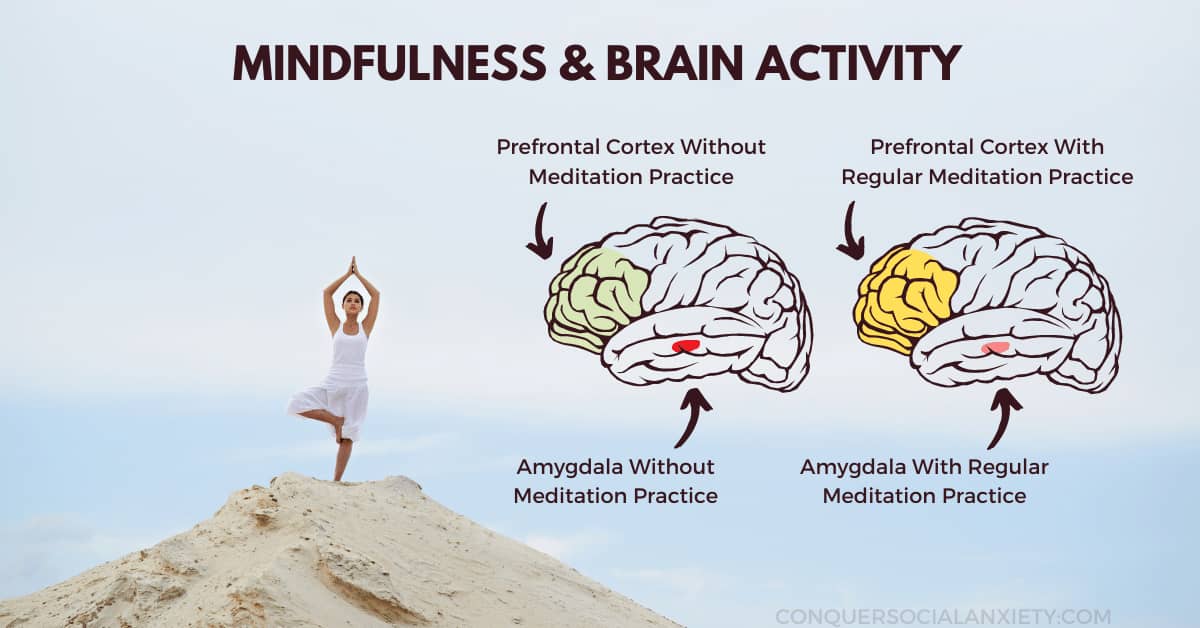
Mindfulness meditation is a lot like going to the gym, but for your brain and its ability to stay calm in stressful situations.
Many people affected by SAD enjoy the practice of mindfulness, as it provides them with a practical tool that they can use on their own and that often yields substantial results in a matter of weeks.
If you’re interested in getting started, feel free to click here to be taken to our comprehensive article on mindfulness meditation for social anxiety, which provides a complete introduction and a couple of guided meditations to get you going.
(6) Prepare for & Practice Presentations
If you are affected by social anxiety at school, it is very likely that presenting something to your peers is among your greatest fears.
Having a fear of public speaking is the norm rather than the exception and is not something you should judge yourself for.
In fact, if you ask college students for their greatest fear, they name fear of public speaking more often than fear of dying (Dwyer & Davidson, 2012).
Keeping in mind that most people experience high levels of agitation when speaking in front of a group can already calm you down a bit in and of itself.
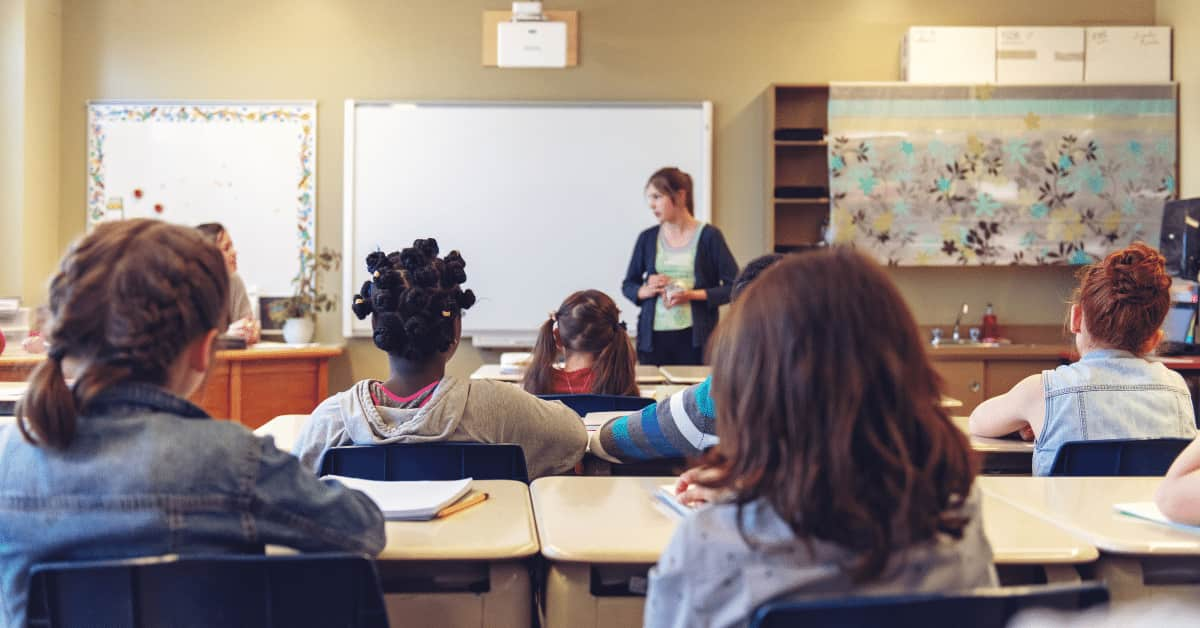
Yet, there are some additional steps you can take.
Especially if you know in advance that you are going to present a certain topic, you could take advantage of it and practice your presentation beforehand.
It helps to have an audience, such as your parents, siblings or a friend.
However, beware of becoming obsessive in your attempts to be prepared. Perfectionism is a trait that is often found in socially anxious people, and believing that you have to do everything flawlessly is probably feeding your anxiety.
Instead, allow yourself to make mistakes. You’re only human, just like any of your peers.
(7) Practice Anxiety-Reducing Self-Care
Another practical tool for those with an anxious temperament is proper self-care.
As basic as this idea may seem, it can have profound effects and should not be dismissed as irrelevant.
There are certain habits that, if practiced daily, will reduce your baseline anxiety levels, or at least not exacerbate them.

You are probably already familiar with all of the following recommendations, so this should be considered a friendly reminder.
If practiced regularly, the following behaviors are likely to have an anxiety dampening effect on your body in stressful situations:
- Good and sufficient sleep.
- A healthy and not extreme diet.
- Physical exercise and increased physical activity in general.
- Regular socializing with people with whom you feel comfortable.
The last one may surprise you a bit, as it is the least obvious.
However, thinking back to the strict lockdown during the Covid-19 pandemic, you may realize how your social anxiety increased as the regularity of your opportunities to socialize decreased.
When the brain is not regularly exposed to everyday social situations, such as hanging out with friends, it reacts somewhat differently when it is exposed to them again, which can result in increased stress or anxiety.
Regular social interaction with people you feel comfortable with triggers the release of hormones and neurotransmitters that tend to alleviate anxiety.

After all, developing and maintaining close connections with others is a basic human need. That’s why healthy physical reactions occur when you engage in this behavior.
At the same time, you should be wary of behaviors that have been shown to potentially increase anxiety in social situations.
This can occur when drinking too much caffeine and alcohol (in the case of the latter, it is usually the next day that is more difficult) or when taking any other illicit drug in general.
In the end, it is up to you to decide which behaviors are good for you and which may increase your levels of insecurity and anxiety.
The above recommendations are simply some useful guidelines.
(8) Adhere to the Basics of Socializing
This point may be most relevant to you if you have difficulty initiating and maintaining conversations with your classmates, or if you feel that you lack the ability to be liked and make friends.
Socializing does not come naturally to everyone, especially for those who have been deprived of opportunities to learn basic social skills early in life.

However, there are some general rules that can help you receive more positive reactions from the people you interact with.
The following list shows a couple of strategies that can improve your chances of both being liked and making friends.
- Cultivate a genuine interest in others. If you are sincerely curious about others and their lives, your conversations will be much more interesting and lead to better experiences for everyone involved.
- Talk about things that others are passionate about. Everyone has their topics that they love – chances are high that people will be more than happy to talk about what excites them. You can make use of this.
- Smile a lot and use friendly body language. A grim face and a posture that signals disinterest are signs to others that you are not approachable and open to interacting with them.
- Be funny using your own style of humor. There is no need to crack jokes all the time. But developing your own type of humor will make people feel good about being with you.
- Have some basic questions and topics ready to use. Examples might be recent and compelling news, something that happened to you that was interesting, or simply asking them about what they have been up to.

Of course, these are just a few examples, and there is no need to think that they are the only way to generate more positive reactions from others.
There are many options and it is always best to find your own style. However, if you don’t know where to start, the above ideas may help you.
(9) Start Therapy
As we mentioned earlier, seeking professional help can be crucial and necessary for those struggling with more severe symptoms.
Again, as mentioned earlier, this is certainly something your parents should be involved in, as this concerns your health and well-being.
If you suspect that you are suffering from social anxiety disorder (again, you can click here to get to our page describing the diagnostic criteria to get an idea), you and your parents may be well advised to talk to your primary care physician or a mental health professional about this.
There are several effective therapeutic approaches that usually lead to significant reductions in measures of social anxiety.
To learn about these approaches, feel free to click here to read our comprehensive article on the treatment of SAD.

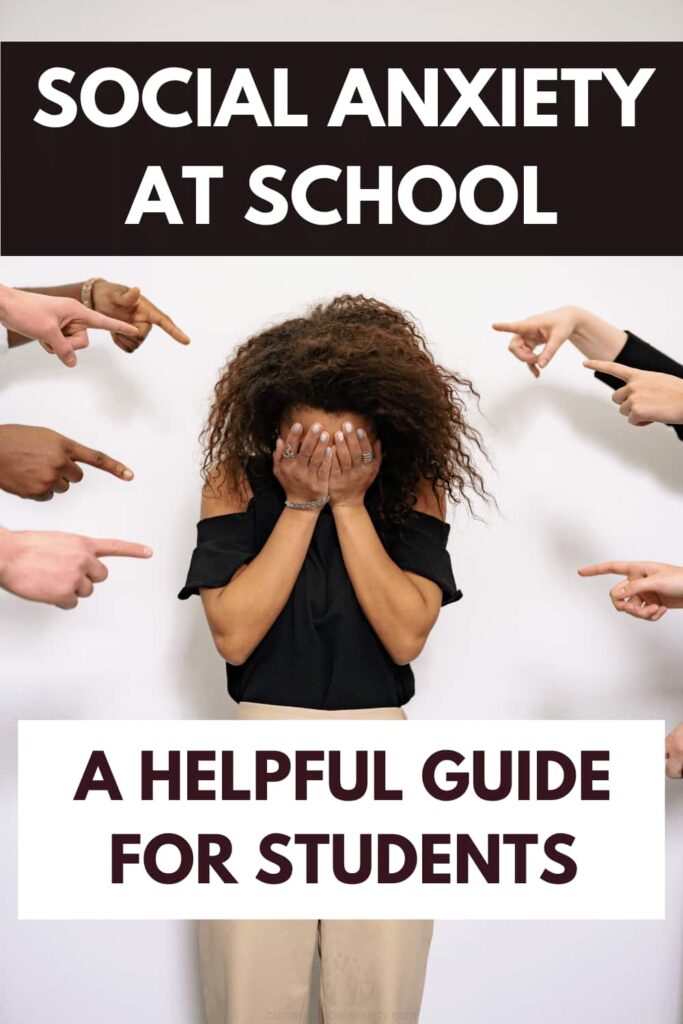
Pin | Share | Follow
[DISPLAY_ULTIMATE_SOCIAL_ICONS]
Alfano, C. A., & Beidel, D. C. (Eds.). (2011). Social anxiety in adolescents and young adults: Translating developmental science into practice. American Psychological Association. https://doi.org/10.1037/12315-000
American Psychiatric Association. (2013). Diagnostic and statistical manual of mental disorders (5th ed.). Arlington, VA: American Psychiatric Publishing.
Bandelow, B., Charimo Torrente, A., Wedekind, D., Broocks, A., Hajak, G., & Rüther, E. (2004). Early traumatic life events, parental rearing styles, family history of mental disorders, and birth risk factors in patients with social anxiety disorder. European archives of psychiatry and clinical neuroscience, 254(6), 397–405. https://doi.org/10.1007/s00406-004-0521-2
Bögels, S. M., van Oosten, A., Muris, P., & Smulders, D. (2001). Familial correlates of social anxiety in children and adolescents. Behaviour research and therapy, 39(3), 273–287. https://doi.org/10.1016/s0005-7967(00)00005-x
Bohlin, G., Hagekull, B., & Rydell, A.-M. (2000). Attachment and social functioning: A longitudinal study from infancy to middle childhood. Social Development, 9(1), 24–39. https://doi.org/10.1111/1467-9507.00109
Condren, R. M., O’Neill, A., Ryan, M. C., Barrett, P., & Thakore, J. H. (2002). HPA axis response to a psychological stressor in generalised social phobia. Psychoneuroendocrinology, 27(6), 693–703. https://doi.org/10.1016/s0306-4530(01)00070-1
Cook, M., & Mineka, S. (1991). Selective associations in the origins of phobic fears and their implications for behavior therapy. In P. R. Martin (Ed.), Handbook of behavior therapy and psychological science: An integrative approach (pp. 413–434). Pergamon Press.
Dwyer, K. K., & Davidson, M. M. (2012). Is Public Speaking Really More Feared Than Death? Communication Research Reports. https://doi.org/10.1080/08824096.2012.667772
Goldin, P., Ramel, W., & Gross, J. (2009). Mindfulness Meditation Training and Self-Referential Processing in Social Anxiety Disorder: Behavioral and Neural Effects. Journal of cognitive psychotherapy, 23(3), 242–257. https://doi.org/10.1891/0889-8391.23.3.242
Grant, B. F., Hasin, D. S., Blanco, C., Stinson, F. S., Chou, S. P., Goldstein, R. B., Dawson, D. A., Smith, S., Saha, T. D., & Huang, B. (2005). The epidemiology of social anxiety disorder in the United States: results from the National Epidemiologic Survey on Alcohol and Related Conditions. The Journal of clinical psychiatry, 66(11), 1351–1361. https://doi.org/10.4088/jcp.v66n1102
Hofmann, S. G., Anu Asnaani, M. A., & Hinton, D. E. (2010). Cultural aspects in social anxiety and social anxiety disorder. Depression and anxiety, 27(12), 1117–1127. https://doi.org/10.1002/da.20759
Jazaieri, H., Goldin, P. R., Werner, K., Ziv, M., & Gross, J. J. (2012). A randomized trial of MBSR versus aerobic exercise for social anxiety disorder. Journal of clinical psychology, 68(7), 715–731. https://doi.org/10.1002/jclp.21863
Kessler, R. C., Davis, C. G., & Kendler, K. S. (1997). Childhood adversity and adult psychiatric disorder in the US National Comorbidity Survey. Psychological Medicine, 27(5), 1101–1119. https://doi.org/10.1017/S0033291797005588
Laneri, D., Schuster, V., Dietsche, B., Jansen, A., Ott, U., & Sommer, J. (2016). Effects of Long-Term Mindfulness Meditation on Brain’s White Matter Microstructure and its Aging. Frontiers in aging neuroscience, 7, 254. https://doi.org/10.3389/fnagi.2015.00254
Lieb, R., Wittchen, H. U., Höfler, M., Fuetsch, M., Stein, M. B., & Merikangas, K. R. (2000). Parental psychopathology, parenting styles, and the risk of social phobia in offspring: a prospective-longitudinal community study. Archives of general psychiatry, 57(9), 859–866. https://doi.org/10.1001/archpsyc.57.9.859
Magee W. J. (1999). Effects of negative life experiences on phobia onset. Social psychiatry and psychiatric epidemiology, 34(7), 343–351. https://doi.org/10.1007/s001270050154
Muris, P., Mayer, B., & Meesters, C. (2000). Self-reported attachment style, anxiety, and depression in children. Social Behavior and Personality: An International Journal, 28(2), 157–162. https://doi.org/10.2224/sbp.2000.28.2.157
Öst, L.-G. (1985). Ways of acquiring phobias and outcome of behavioral treatments. Behaviour Research and Therapy, 23, 683-689.
Öst, L.-G., & Hugdahl, K. (1981). Acquisition of phobias and anxiety response patterns in clinical patients. Behaviour Research and Therapy, 19(5), 439–447. https://doi.org/10.1016/0005-7967(81)90134-0
Spence, S. H., Donovan, C., & Brechman-Toussaint, M. (1999). Social skills, social outcomes, and cognitive features of childhood social phobia. Journal of abnormal psychology, 108(2), 211–221. https://doi.org/10.1037//0021-843x.108.2.211
Spence, S. H., & Rapee, R. M. (2016). The etiology of social anxiety disorder: An evidence-based model. Behaviour research and therapy, 86, 50–67. https://doi.org/10.1016/j.brat.2016.06.007
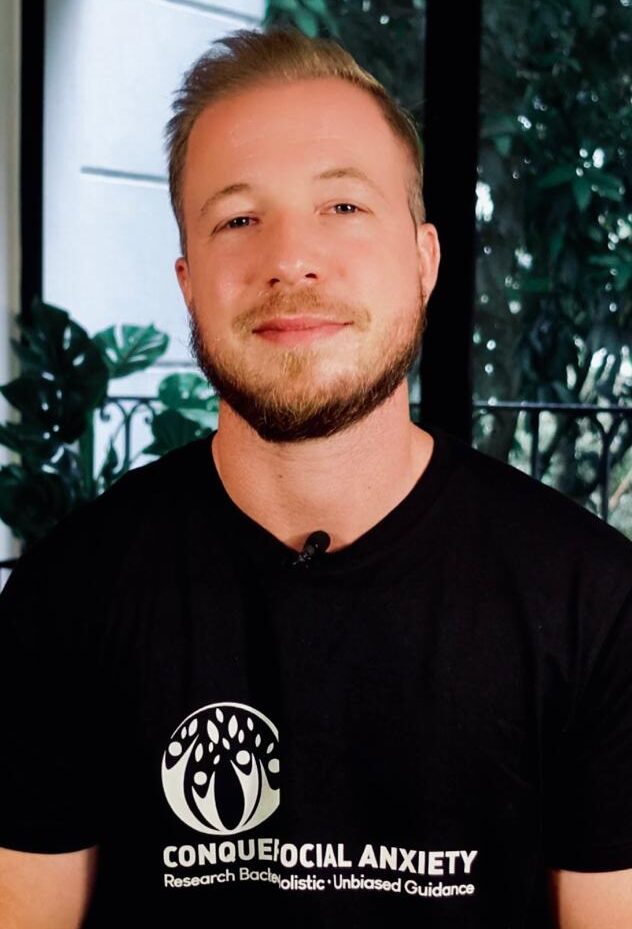
About the Author: Martin Stork
Martin is a professional psychologist with a background in physical therapy. He has organized and led various support groups for people with social anxiety in Washington, DC and Buenos Aires, Argentina. He is the founder of Conquer Social Anxiety Ltd, where he operates as a writer, therapist and director. You can click here to find out more about Martin.







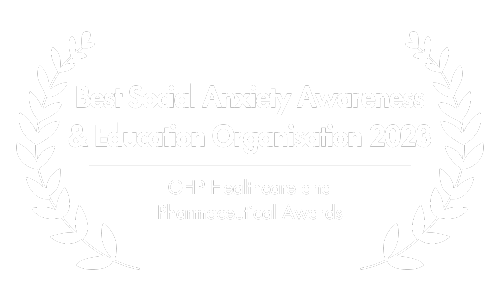

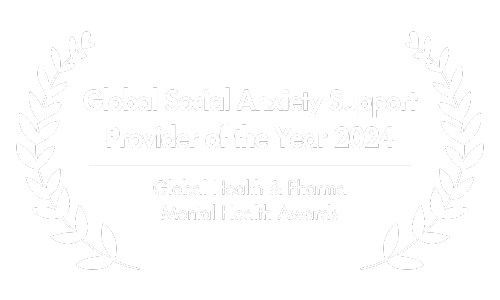


Well researched article with great advice and strategies. Being socially anxious is something I’ve had to deal with for most of my life. Thank you for highlighting this condition and sharing awareness and understanding. 🙂👍
Thank you for your feedback! It is so good to know that we reach people who find our content helpful.
Really very nice information on this site. Thanks for sharing this nice information.